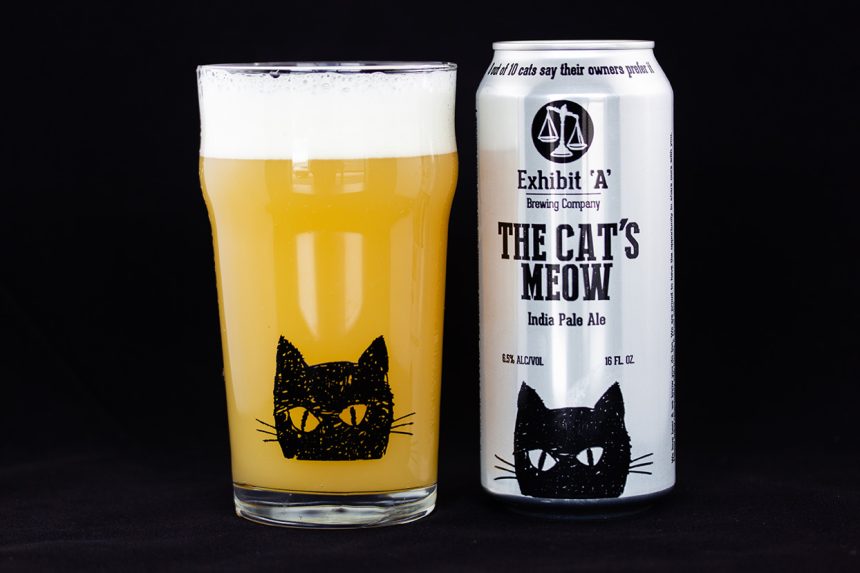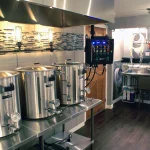At the top of my house wish list are commercial clones of New England IPAs. Why? I want to compare the same commercial beer with home brewed beer. Before we continue, I recommend you read this post as an introduction.
Today, in the world of craft beer, it’s hard to find a local brewery with real beer. This is even more difficult when it comes to IPA in New England. Many breweries are making new beers. Every week and favorite beers will change periodically.
To make a fair comparison, I have to make a beer that I can buy in a day. Waiting a few months for the beer to form is not an option for IPAs. The quality of freshness is greatly affected. After two calls to the local brewery, Exhibit co-founder and brewery owner, Matthew Steinberg, answered the call.
Beer and bar
Gallery A is located in Framingham, Massachusetts. It’s only 25 minutes from where I live, and features a variety of beers with a focus on New England-style IPAs. Their most popular beer is another favorite (and longtime favorite) Cat Meow, a New England IPA. I like that you find the perfect balance between the signature IPA and the proper 6.5% ABV lager (most by today’s standards).
Scene A finds most of the homegrown seeds from Valley Malt in Massachusetts. Matthew goes to the farm, touches the ground. Talk to Joe and he’ll share the importance of finding the right fit for your brewery. As a home brewer, I love this project – I appreciate the role it plays in supporting local businesses and agriculture. I’m surprised that Show A will distribute beer in Japan! Honestly, dogs are important… I can’t blame them.
Purpose
The icon of commercial beer seems to be a hot topic in the world of home brewing. While some homebrewers like to imitate commercial beer, others see it as “a waste of time and not creative” (if that describes you, you’re right). The following will really annoy you.) I personally find juggling a great opportunity to learn and understand the difference between professional and amateur brewing methods.
The purpose of this experiment is threefold. We wanted to evaluate the actual reproducibility of retail beer by controlling for several variables. Can good commercial recipes be easily scaled down and made on a home brewing scale?
Another part of this test is to identify the ingredients and side effects of a particular product. It is difficult to evaluate our recipes when we have nothing to compare them to. I thought this would be a good opportunity to evaluate myself while brewing a New England IPA and really test the beer’s aroma.
Finally, there is a lot of guesswork and misinformation when comparing commercial and domestic NEPA. Do commercial bars use fewer additives to fill the same amount? Does the home beer want the other side hops hot to emulate the same bitterness and aroma? How much versatility is not a dry jump should be a character as an exciting jump? Through this experience, I was able to overcome these questions.
Equipment
I think it is important to start with an overview of the appliances used in the home. We built a 20 gallon electric EBIAB system with a 5500 watt ripple element. My container is a sound weapon 8 gallon brewer. All the bells and whistles a home brewer needs.
Hot page work is easy. But my cold ones are mostly commercial sized cones. This obviously simplifies the remarketing process.

Cooking and acting achievements
Matthew and I had a long conversation about dog bites.
I actually take a very basic approach to narrow down the recipes. It’s extremely important to develop brewing programs when doing this. You can select and measure the grain percentage. Calculate the initial and final gravity and thus the approximate IBU for the loser.
Bonus seeds: This is the easiest part (obviously). The grain award is to increase the percentage of flour packaged in the 5-gallon category. Source A came with specific seeds that I couldn’t catch. You can look at this in the future if you really want to, but I chose the closest option I could find online.
Yeast: Made with the same brand and type as Cat’s Meow, luckily it’s very popular and available to home brewers. And for anyone wondering DUH, it’s WY1318… nope. The only part not repeated here is the yeast production. Meows don’t usually spill over new sounds. Matthew noted that the condition was very pure and lacked the main fruit esters found in previous seasons.
There had been no conflict. So I made a big dough starter and whipped it up. Not perfect but probably close enough. I ended up with a really healthy amount of yeast, which was probably too heavy for the batch.
Hops: I think it’s important to understand that not all hops are the same. Like grapes, hops change from year to year, showing different characteristics in different locations and regions. It is not uncommon for breweries to brew beer with 2-3 year old hops, although we can reproduce the different hops in this beer. We don’t use the same hops though. *Actually* most of these beers are made with Citra, Mosaic and El Dorado.
Just vortex additive with raw hops from pounds to ounces per gallon. The hot portion was much less and was slightly smaller than the usual hot portion (1.75 oz total). 7 oz and 3 tablespoons hops.
Water: Geographically, Dr. A and I always get water from the same source. I used tap water to create a cat-like watercolor sketch. This beer has a 2:1 chloride to sulfate ratio.
Vortex: This is an interesting step in the process. Scene A uses another tub, which is mainly used to ferment hops. The hot wort is drained directly from a boiling kettle and mixed with the hops at near boiling temperature. The matter does not pass through the heat exchanger. So Whirlpool is on the hotter than normal side of the homebrew meter.











